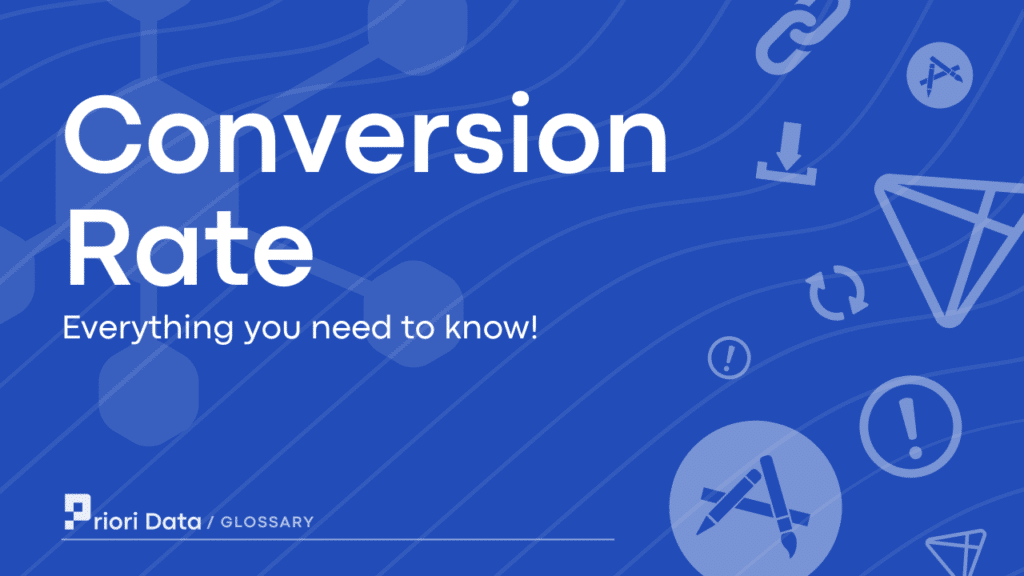When a customer or visitor to a website performs a desired action, it is called a conversion. It could be purchasing an item, using a certain service, installing an application, etc.
In marketing, responding to a ‘call to action’ is conversion. Opening an email you sent, signing up for an offer or giveaway, and filling out a registration form on your website all come under conversion.
Conversion rate helps analyze the percentage of website visitors or users who have completed a specific action.
The biggest advantage of knowing the conversion rate is that it helps you understand your users better, which helps funnel them more toward using the services or purchasing the products that best meet their requirements. As a result, you get more repeated and valued customers.

How is Conversion Rate Calculated?
The conversion rate is calculated by taking the number of visitors who convert (took the specific action) and dividing it by the total number of visitors to the website. This figure is then converted into a percentage.
For instance, if you run an ad campaign on Instagram that reaches an audience of 10, 000 and out of these 10, 000 people, 500 users click on the ad, the conversion rate will be 5%.
It can be calculated as: (500/10, 000) X 100 = 5%
With this number, we can estimate that 5% of Instagram users who saw your ad converted. It will help you understand your target audience better, and efforts could be made to improve this metric.
Calculating the conversion rate accurately is very important. The result could be skewed if you start counting each click on your website. Therefore, counting every unique visitor only once will give the best metric.
What should be the Frequency of Calculating the Conversion Rate?
Due to unpredictable fluctuations in the market conversion rates vary. You need to understand the mood and interest of your customers to score better.
Usually, the number of times the conversion rate should be calculated varies from company to company. While some companies prefer taking the metrics monthly, others annually. However, certain circumstances may arise when conversion rate should be calculated less or more often.
For instance, if the measurement period is a year, it is advised to calculate the conversion rate in short periods. It will help you track conversions across multiple periods for better understanding.
On the contrary, measuring the conversion rate over a long period will help you get accurate data. Since the market experiences ebb and flow every year that affects the number of conversions, giving enough time to the measurement period helps balance it out itself.
Here, it is essential to understand that your calculations to conversion rate should speak about your development cycles. If you are experiencing a significant update every month, calculating the conversion rate monthly will help expand the opportunities.
What is the Importance of Conversion Rate?
Conversion rate is one of the best ways to compare the performance of different ad channels. It helps measure the success of every ad campaign, especially when you are into mobile user acquisition.
Moreover, when scaling a campaign, the conversion rate can be used to set ROI expectations.
Here, it is important to understand that conversion rate does not always refer to clicks but many other conversion events down the funnel. To give an example, people installing an app, buying an item, completing an in-app action, etc., also comes under conversion.
Conversion rate helps marketers and businesses identify their valuable visitors or users. This information further helps in optimizing the performance of the campaign. At the same time, the conversion rate analysis helps determine the most effective channels for promotion that can be used later for making strategic decisions.
A low conversion rate does not always mean poor products or services. It could also result from issues in the app’s UX, like problems in signing in that open the door to improvement.
How to Improve the Conversion Rate?
In order to spike up your conversion rate, it is essential to understand your customer and their needs. Here are a few ways to improve your conversion rate-
- Brainstorm what you bring to the table for visitors, users, or customers. Here, quality surpasses quantity. Creating lucrative services and products at a reasonable price helps the most.
- Know your competition and check who is performing better than you and why.
- Work on your sales copy and make it as compelling as possible. A well-written copy can force users to click and take a specific action.
- Optimize your website and work on its structure to increase conversions.
FAQs
Q1. How does the conversion rate differ from the click-through rate (CTR)?
Ans: Conversion rate displays how many website or app visitors completed an action out of the total number of visitors, and CTR measures how many people clicked your ad and visited a website or landing page.
Q2. What factors affect conversion rate?
Ans: The six major factors affecting conversion rate include value proposal, relevance, clarity, anxiety, distraction, and urgency.
Q3. How much the conversion rate is good?
Ans: The companies with the most success tend to convert at around 20-25%. However, an average conversion rate is usually around 3% to 5%. Efforts should be made to improve this number.






